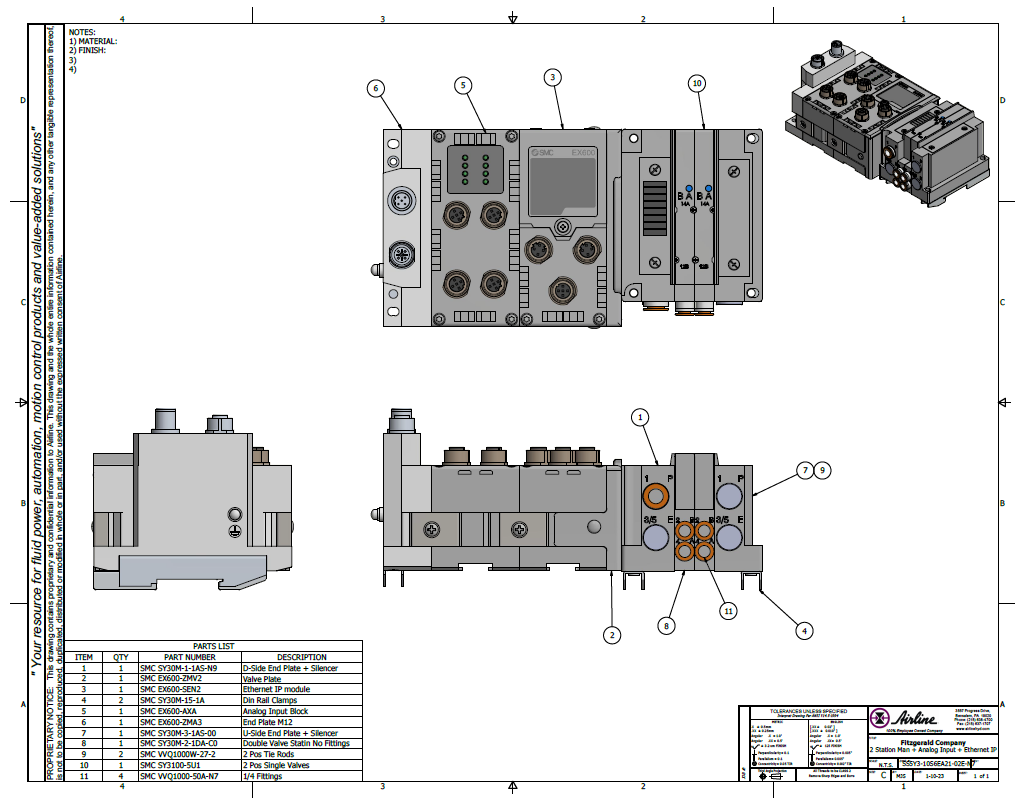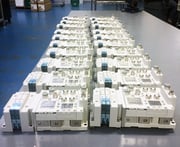Pneumatic valve manifold assemblies are critical components in industrial automation systems. They enable efficient control of fluid power applications, simplifying complex circuits and reducing the need for numerous valves and other components. Building these assemblies requires patience, expertise, and precision. In this blog, we will show the steps involved in building valve manifold assemblies in our timelapse video and spotlight TJ, an assembler at our Bensalem, PA facility.
Skip to a Section
Meet TJ | Process for Assembling | Popular Pneumatic Valves | Summary
We created a video timelapse that shows the step-by-step process of assembling a manifold, from laying out the components to testing the final product. It provides a detailed look at the assembly process, highlighting the precision and expertise required to build these critical components. Watch the timelapse video below.
The Assembler in the Video: Meet TJ .png?width=317&height=238&name=Untitled%20design%20(7).png)
To gain insight into this process, we spoke with TJ, one of our top subassembly floor employees, who has worked at Airline since 2007. Her electrical background taught her about controls and electrical equipment, and by attending classes provided by SMC, she gained additional tools to become the subassembly specialist she is today.
TJ can assemble 16-20 pneumatic valve assemblies in Airline's ISO 9001-certified facilities in one day. Her biggest challenge? Like many of us, supply shortages are her biggest battle. Still, TJ is setting a personal goal to work through those challenges, assembling available portions of projects, and staying nimble for when other components are back in supply.
TJ's Process for Assembling Pneumatic Valve Manifolds
Step 1: Plan the Layout
The next step is to plan the layout of the manifold assembly. Planning involves deciding how many valves are needed, where they will be located on the manifold, the required flow rate, and how they will be connected to the rest of the system. A good layout will ensure the assembly is compact, efficient, and easy to operate. Based on the design, we will produce a production order list.
For example, below is a drawing laying out the manifold TJ builds in the video.

Step 2: Gather the Required Materials
Before building the valve manifold assembly, we gather all the necessary materials and check the parts against the production order list. These include pneumatic components such as valves, fittings, tubing, and hardware like mounting brackets and screws. We choose components compatible with each other and the application for the assembly.
Step 3: Assembly / Install Valves and Fittings
Now it’s time to install the valves and fittings onto the manifold. We start by screwing the valves into their designated manifold ports, ensuring they are tight but not over-tightened. Then, we connect the valves to the rest of the system using tubing and fittings. Lastly, add endplates and din rail brackets for mounting.
Step 4: Test and Adjust
Once all the components are in place, it’s time to test them at 100 PSI and make any necessary adjustments. We turn on the air supply and test each valve to ensure it opens and closes properly. If leaks or other issues exist, we troubleshoot and fix them before proceeding.
Step 5: Finalize the Assembly
Once fully functional, we finalize the assembly by securing all components and labeling them appropriately. We perform an extensive QA inspection per our ISO9001 certification. Once completed, we'll bag the assembly to eliminate dust.
Lastly, once the entire manifold order is built and tested, the order is safely packaged and shipped to the customer, where, upon arrival, they are ready for immediate use. Learn more about our valve manifold build capabilities in the link below.
Popular Valves used in Pneumatic Manifolds
TJ works with many different types of pneumatic valves, but the most popular is from the world's leader in pneumatics, SMC. The familiar SY valve has been a well-known standard for many years. But that's not the only excellent valve from SMC - their JSY, SV, VQC, and other series are perfect for many applications. Learn more on our blog post, SMC Solenoid Valve Review.
Summary
In conclusion, building pneumatic valve manifold assemblies requires expertise and precision. It is a critical process in ensuring that industrial automation systems function efficiently and safely. By watching the video timelapse and learning from experienced technicians, we can better understand the process and the benefits of using these critical components in our automation systems.










Leave Comment